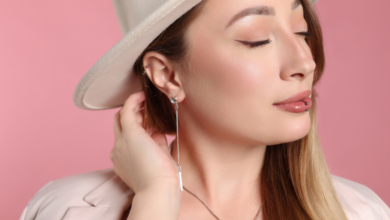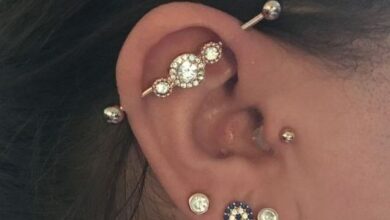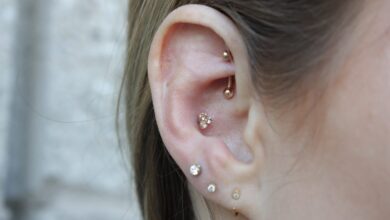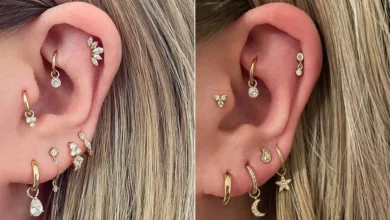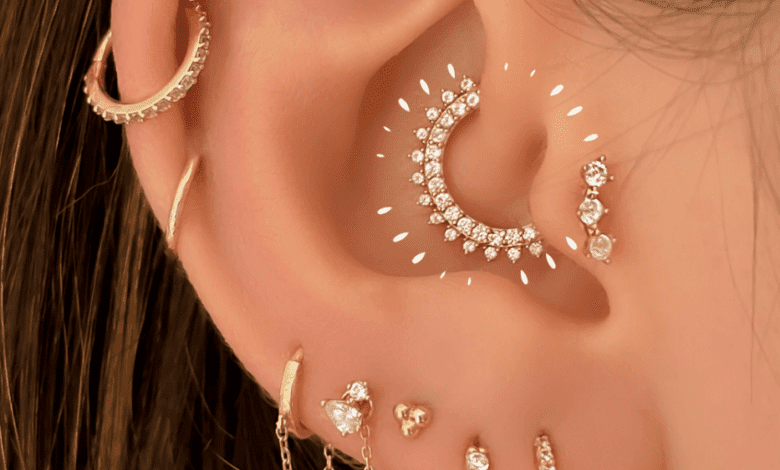
Have you ever wondered about the fascinating allure behind daith piercings? These unique and stylish ear piercings have been surging in popularity recently, captivating the attention of many curious individuals. With its placement in the innermost fold of the ear, the daith piercing not only offers a trendy addition to your look but also holds potential benefits for alleviating migraine symptoms. As we delve into the world of daith piercings, you’ll discover the allure and intrigue that surrounds this popular trend.
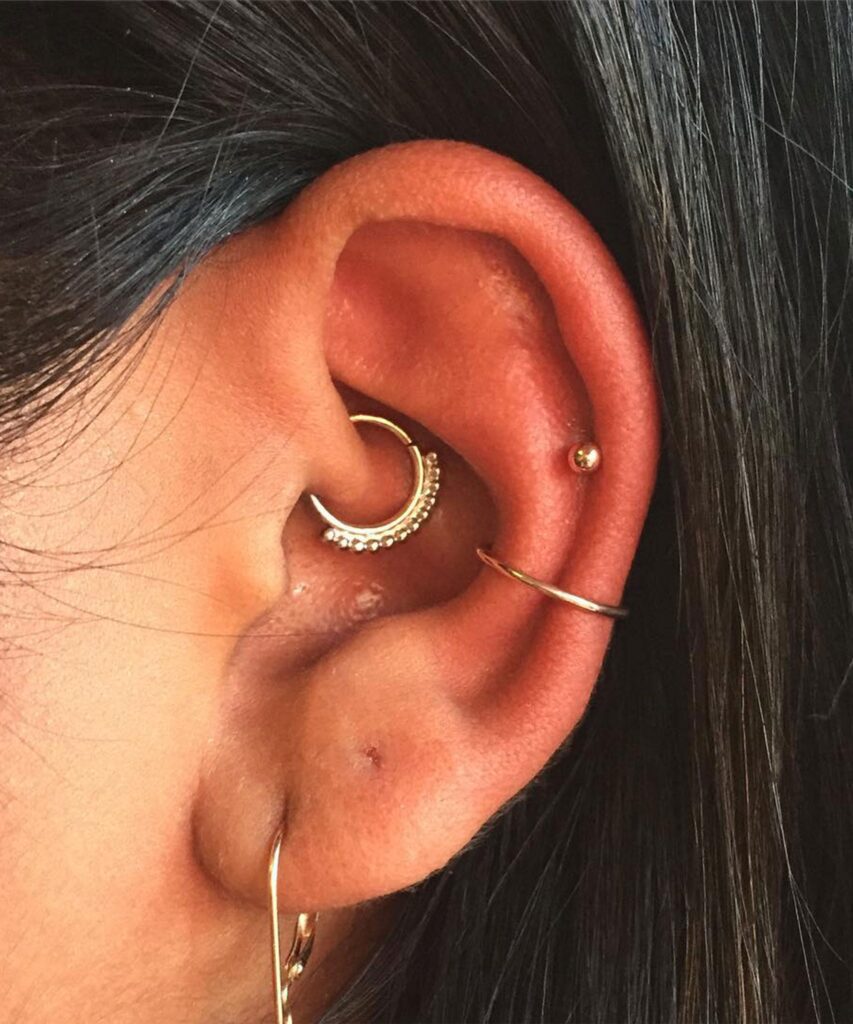
What is a Daith Piercing?
Definition of a Daith Piercing
A daith piercing is a specific type of ear piercing that goes through the innermost cartilage fold of the ear, also known as the daith. It is characterized by a small hoop or stud placed in this area, creating a stylish and unique look.
History of Daith Piercing
The history of daith piercing can be traced back to ancient times when body modification was a prevalent practice in various cultures. While the specific origin of daith piercing is unclear, it is believed to have been popularized by indigenous tribes who viewed it as a form of adornment and spiritual significance.
Popular Variations of Daith Piercing
Over time, daith piercing has evolved, giving rise to numerous variations that cater to different styles and preferences. Some popular variations of daith piercing include using multiple hoops or studs, adding decorative charms, or combining it with other ear piercings to create a personalized look.
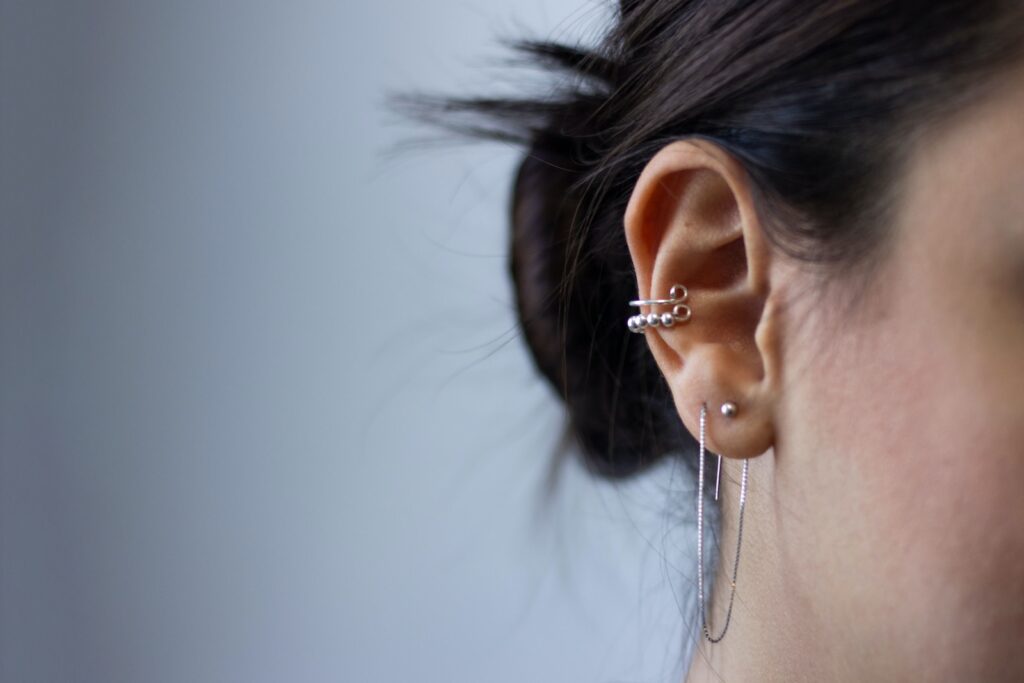
Understanding the Placement of a Daith Piercing
Anatomy of the Ear
To understand the placement of a daith piercing, it is important to familiarize yourself with the anatomy of the ear. The ear consists of various parts, such as the lobe, helix, tragus, and antitragus. The daith, specifically, is located just above the ear canal, where the cartilage is thicker.
Location of the Daith Piercing
The daith piercing is positioned in the small area of the cartilage fold above the ear canal. It requires precision and expertise from a professional piercer to ensure the piercing goes through the correct spot without damaging the surrounding tissues.
Procedure and Aftercare
During the daith piercing procedure, the piercer will use a sterilized needle to create a small hole in the daith. It may cause a brief sensation of pressure or discomfort, but the pain is usually minimal. After the piercing, it’s crucial to follow proper aftercare instructions, which include keeping the area clean, avoiding harsh chemicals or products, and not touching the piercing unnecessarily.
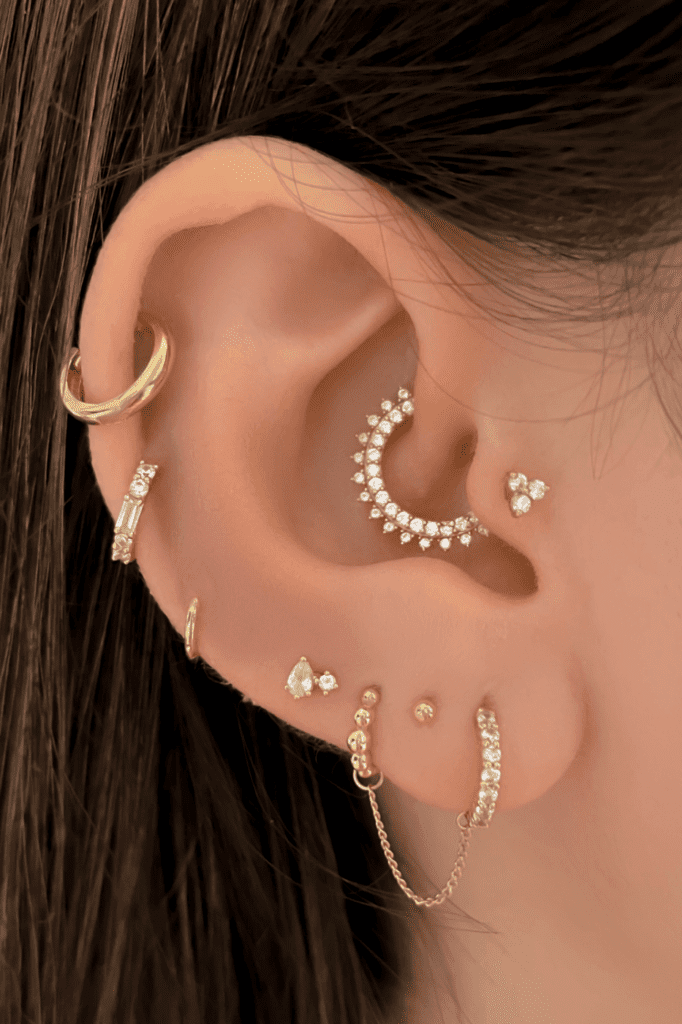
Cultural Significance of Daith Piercing
Daith Piercing in Traditional Practices
Daith piercing holds cultural and spiritual significance in several ancient traditions. In some cultures, it is believed to enhance a person’s spiritual connection and promote healing energy flow. It is often regarded as a symbol of strength, wisdom, and protection.
Daith Piercing in Modern Culture
In modern culture, daith piercing has gained popularity as a trend in the world of body modifications. It is embraced as a form of self-expression and personal style. Many individuals choose daith piercing as a way to showcase their unique aesthetic and embrace their individuality.
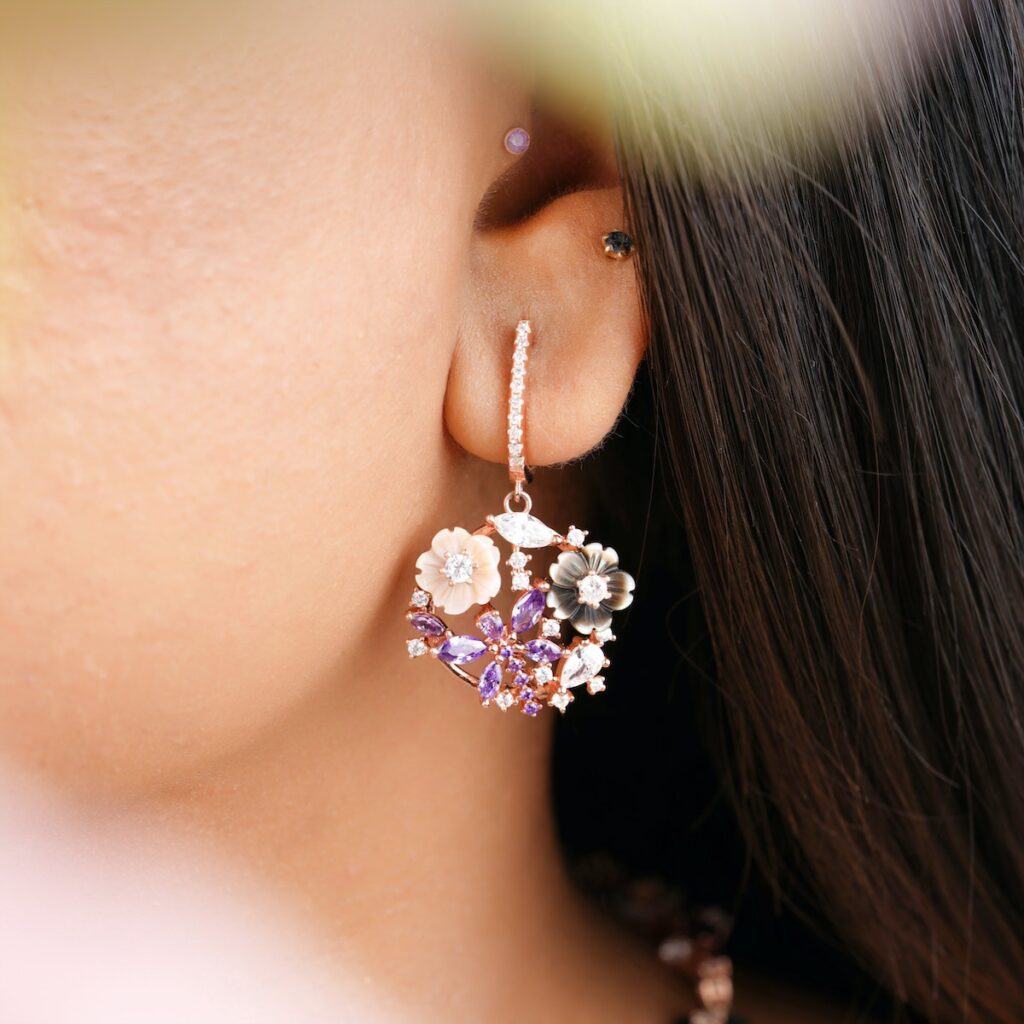
Symbolism Associated with Daith Piercing
A daith piercing can hold different meanings for different individuals. Some may associate it with inner strength and overcoming challenges, while others may view it as a symbol of embracing change and transformation. It can also represent a connection to spirituality or simply serve as a fashion statement.
Exploring the Pain and Healing Process
Is a Daith Piercing Painful?
Pain tolerance varies from person to person, but generally, daith piercing is considered to be moderately painful. The discomfort experienced during the piercing itself is usually short-lived and comparable to a quick pinch or sting. With proper aftercare, any lingering pain or soreness should diminish over time.
Factors that Affect the Pain Level
Several factors can influence the pain level experienced during a daith piercing. These include individual pain tolerance, the expertise of the piercer, the thickness and sensitivity of the cartilage, and the use of appropriate techniques and tools during the procedure. It is important to choose a reputable piercer who can minimize discomfort and ensure a safe experience.
Healing Time and Aftercare Tips
The healing time for a daith piercing can vary, but it generally takes around 3 to 6 months for the initial healing process. However, full healing may take up to a year. To promote proper healing, it is essential to follow aftercare tips such as cleaning the piercing with saline solution, avoiding swimming or excessive moisture, and refraining from changing jewelry too soon.
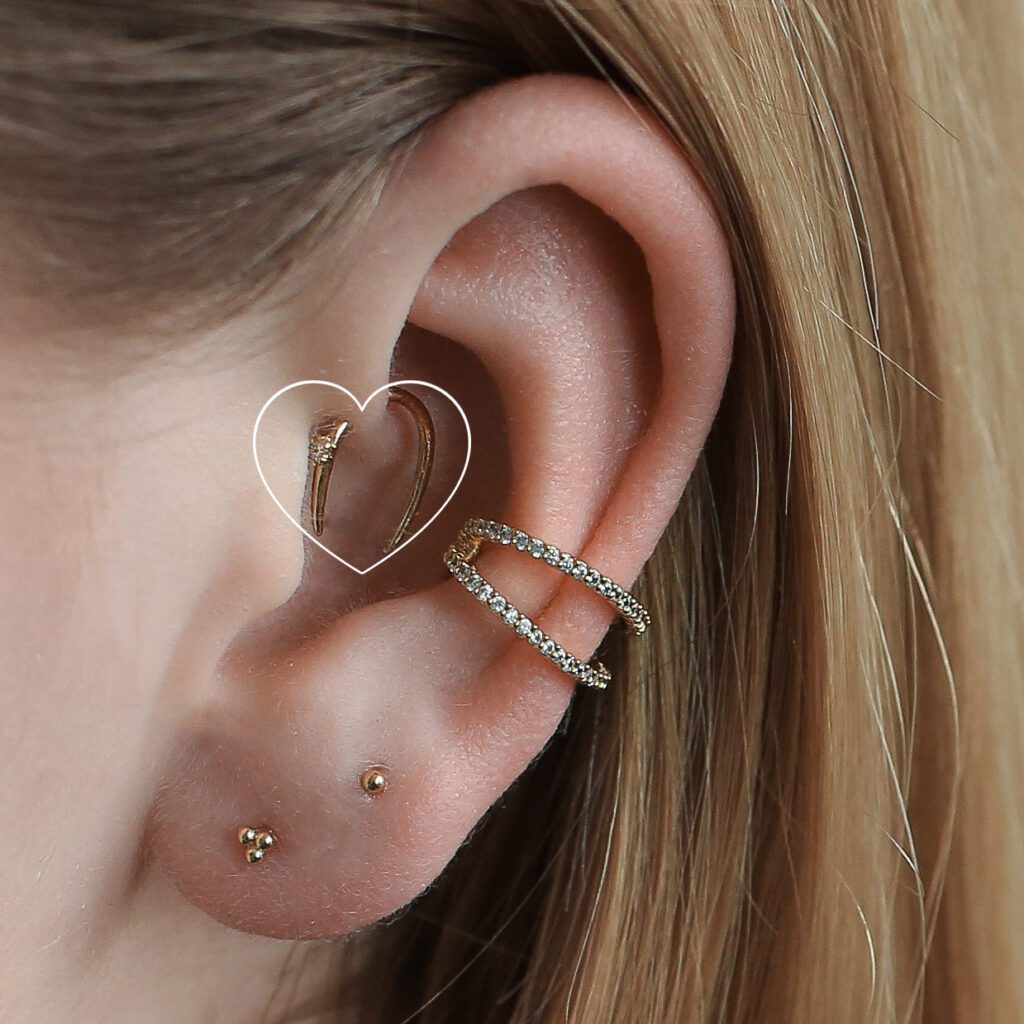
Fashion and Style Trends with Daith Piercing
Celebrities Sporting Daith Piercings
Daith piercing has become a popular choice among celebrities who want to showcase their fashion-forward style. Celebrities such as Beyoncé, Rihanna, and Emma Stone have been spotted wearing daith piercings, which has further popularized this trend and inspired others to follow suit.
Popular Jewelry Options for Daith Piercing
When it comes to jewelry options for daith piercing, the choices are extensive. Hoops and captive bead rings are commonly preferred, as they complement the natural curve of the ear. Additionally, there are various materials available, including stainless steel, titanium, and gold, allowing individuals to customize their look based on their personal style and budget.
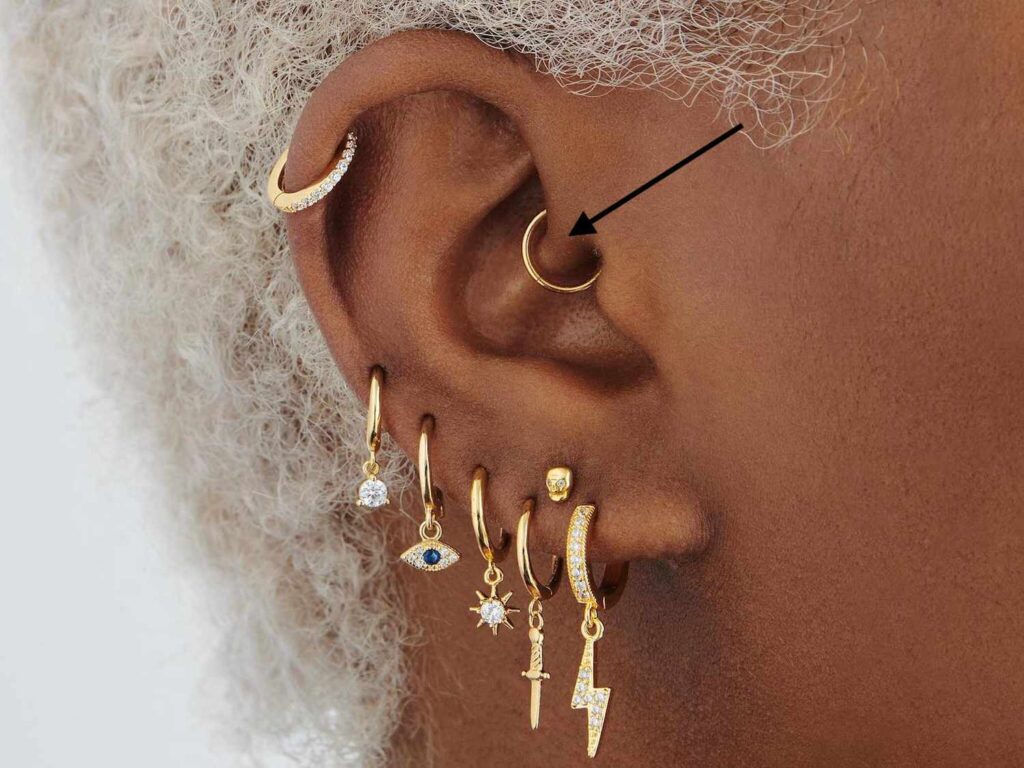
Styling Ideas and Inspirations
A daith piercing can be a versatile accessory, allowing for endless styling possibilities. One popular way to style a daith piercing is by pairing it with other ear piercings, creating a curated ear or “ear stack.” This involves incorporating different types of earrings, such as studs, hoops, and dangles, to create a unique and eye-catching look.
Potential Risks and Complications
Infection and Poor Hygiene
Like any piercing, there is a risk of infection if proper hygiene measures are not followed. It is crucial to clean the piercing regularly with saline solution and avoid touching it with dirty hands. If any signs of infection, such as redness, swelling, or pus, occur, it’s important to seek medical attention.
Migration and Rejection
Migration and rejection are potential risks associated with daith piercing. Migration refers to the movement of the jewelry from its initial placement, which can lead to discomfort and potential scarring. Rejection occurs when the body views the jewelry as a foreign object and pushes it out. Proper aftercare and choosing high-quality materials can minimize the chances of these complications.
Allergic Reactions
Some individuals may experience allergic reactions to certain metals used in daith piercing jewelry, such as nickel. It is important to choose hypoallergenic materials, like titanium or gold, to reduce the risk of allergic reactions or irritation.
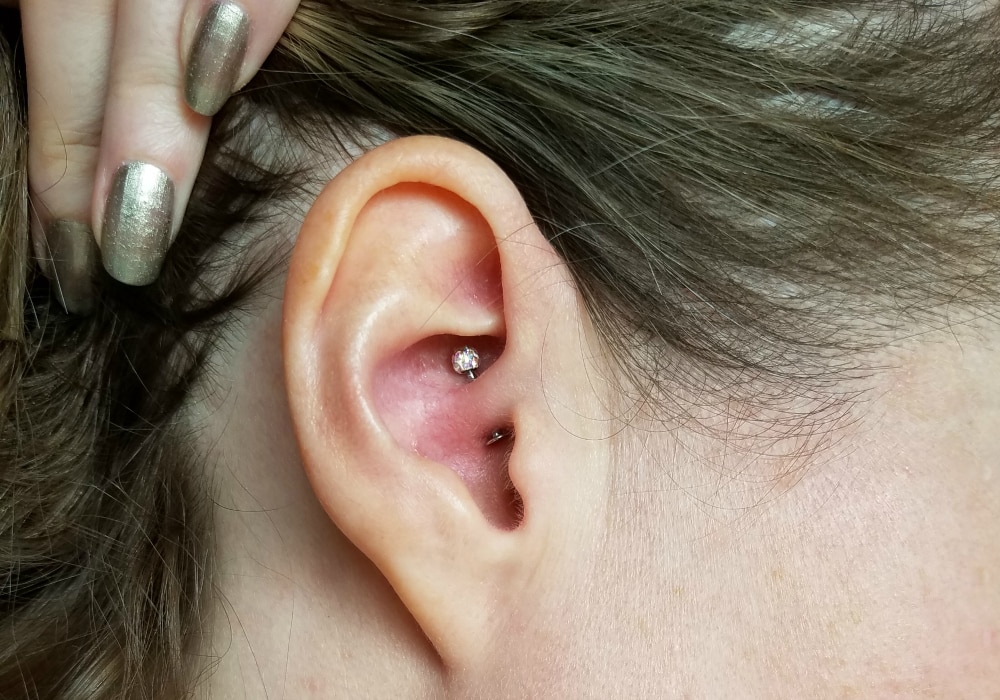
Pros and Cons of Getting a Daith Piercing
Advantages of Daith Piercing
One of the advantages of daith piercing is the aesthetic appeal it adds to an individual’s overall style. It can be a unique and eye-catching way to express oneself. Additionally, for those who believe in its spiritual significance, daith piercing can serve as a symbol of personal growth and inner strength.
Disadvantages of Daith Piercing
While daith piercing has its allure, there are also potential disadvantages to consider. The pain associated with the piercing process and the healing period can be uncomfortable for some individuals. There is also the risk of complications, such as infection or rejection, which may require medical attention.
Considerations before Getting a Daith Piercing
Before getting a daith piercing, it is important to consider various factors. These include pain tolerance, commitment to aftercare, choosing a professional piercer, and understanding the potential risks involved. Taking the time to research and make an informed decision will ensure a positive and satisfying piercing experience.
Frequently Asked Questions (FAQs) about Daith Piercing
Can a Daith Piercing Help with Migraine Relief?
There is some anecdotal evidence suggesting that daith piercing can provide relief from migraines. However, scientific studies are limited, and individual experiences may vary. It is essential to consult with a healthcare professional before relying on a daith piercing as a solution for migraines.
How to Choose a Professional Piercer?
Choosing a professional piercer is crucial for a safe and successful daith piercing experience. Consider factors such as their reputation, hygiene practices, experience, and portfolio of past work. It is recommended to visit several studios, ask for recommendations, and read reviews before making a decision.
Can You Use Earphones or Headphones with a Daith Piercing?
Using earphones or headphones with a daith piercing can be challenging during the initial healing stages. The pressure and friction from the earpieces may irritate the piercing. It is best to consult with a piercer for specific recommendations and consider using alternative listening options or adjusting the positioning of the earpiece to minimize discomfort.
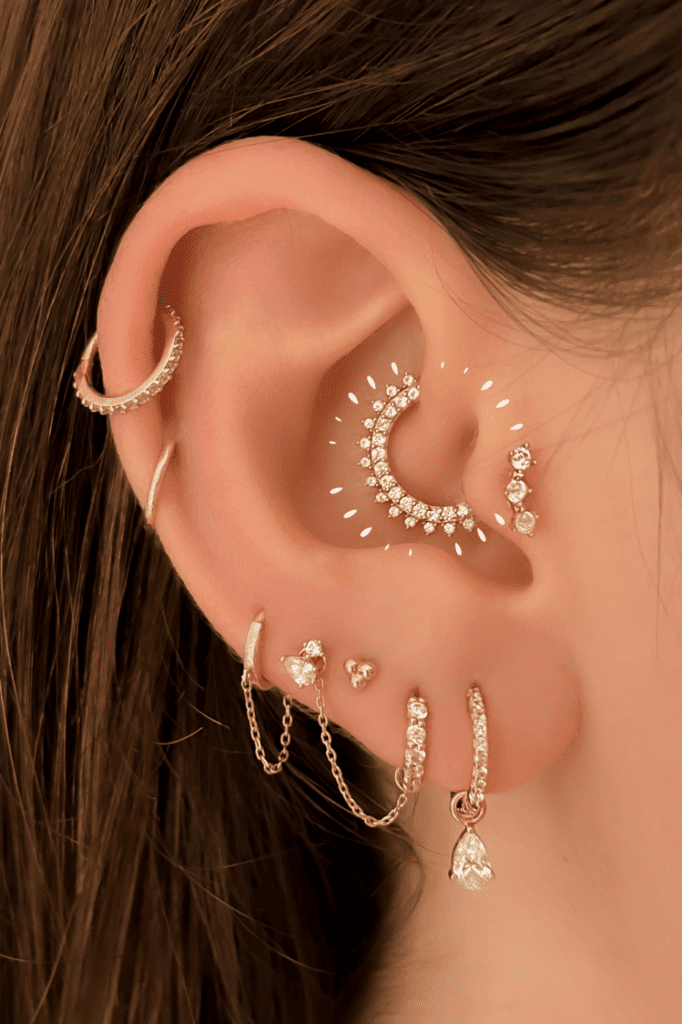
Tips for Proper Daith Piercing Aftercare
Cleaning and Disinfecting the Piercing
To promote proper healing and minimize the risk of infection, it is crucial to clean and disinfect the piercing regularly. Use a saline solution or saline wound wash to gently cleanse the area, avoiding harsh soaps or alcohol-based solutions. Make sure to wash your hands thoroughly before touching the piercing.
Avoiding Potential Irritants
During the healing process, it is important to avoid potential irritants that can disrupt the healing or cause an allergic reaction. This includes avoiding swimming in pools, hot tubs, or natural bodies of water, as well as avoiding hair products or cosmetics that can come into contact with the piercing.
Managing Pain and Discomfort
While some pain and discomfort are normal during the healing process, there are ways to manage it. Over-the-counter pain relievers, such as ibuprofen, can help alleviate any soreness. Applying a cold compress or using chamomile tea bags can also provide temporary relief. Remember to consult with a healthcare professional if the pain persists or worsens.
Conclusion
Daith piercing offers an exciting and visually appealing way to express personal style and individuality. Whether you are drawn to its cultural significance, fashion-forward trends, or potential migraine relief, it is essential to consider the placement, pain level, aftercare, and potential risks before deciding to get a daith piercing. By following proper aftercare instructions, consulting with a professional piercer, and making informed choices, you can enjoy the allure of daith piercing while minimizing potential complications.
The Origins of Daith Piercings in Jewish Culture(Opens in a new browser tab)
The 16 Types of Ear Piercings: Choosing Based on Pain and Placement(Opens in a new browser tab)
Stylish.ae’s Ultimate Guide To Ear Piercings: From Lobe To Cartilage(Opens in a new browser tab)

